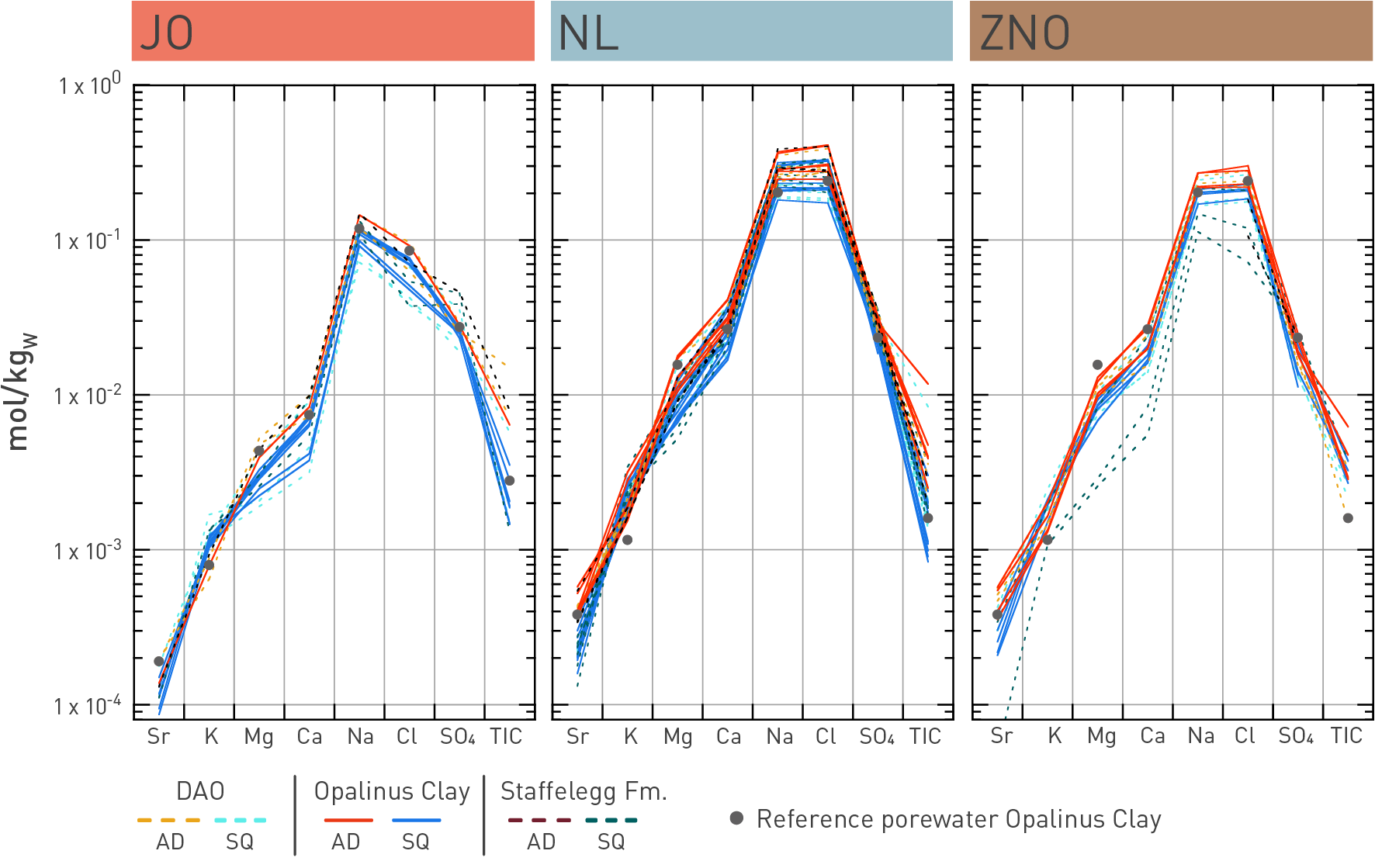Given the physico-chemical complexity of the pore space, different extraction methods are used to sample different fractions of the porewater. Comprehensive porewater compositions that are considered to be close to the free porewater composition are obtained by direct sampling methods such as advective displacement and high-pressure squeezing of rock samples (Kiczka et al. 2023, Mazurek et al. 2015, Mäder 2018).
The specific characteristic porewater compositions in JO, NL and ZNO are consistently reflected in the porewaters obtained by advective displacement and high-pressure squeezing (Fig. 5‑19). Porewaters of the Opalinus Clay and the confining units (Dogger Group above Opalinus Clay and Lias Group) in NL and ZNO are of Na-Cl type, whereas the porewaters in JO are more dilute and of Na-Cl-(SO4) type. Cl concentrations in the Opalinus Clay are in the range of ~ 7 – 14 g/L in NL and ZNO but significantly lower in JO (~ 2 – 3 g/L). The different salinities reflect the local hydrogeological controls, for example the larger influence of a younger meteoric groundwater component in the comparably shallower JO siting region (Section 4.6). The difference between the Opalinus Clay porewaters in JO and NL and ZNO is also manifested in the distinctly higher SO4/Cl ratios in the former region. Within the Opalinus Clay, vertical chemical gradients are small, but in some profiles (e.g. in ZNO and JO) a slight decrease in Cl concentrations with depth in the lower part of this unit is manifested due to the influence of the underlying Keuper aquifer (Section 4.6.3).

Fig. 5‑19:Schoeller plots visualising the chemical composition of porewater in the Opalinus Clay and in the adjacent confining units in the three siting regions
Data from advective displacement (AD) and high-pressure squeezing (SQ) are shown (Kiczka et al. 2023) and compared to the respective reference porewater for the Opalinus Clay as defined in Mäder & Wersin (2023). DAO: Dogger Group above Opalinus Clay, Fm.: Formation.

